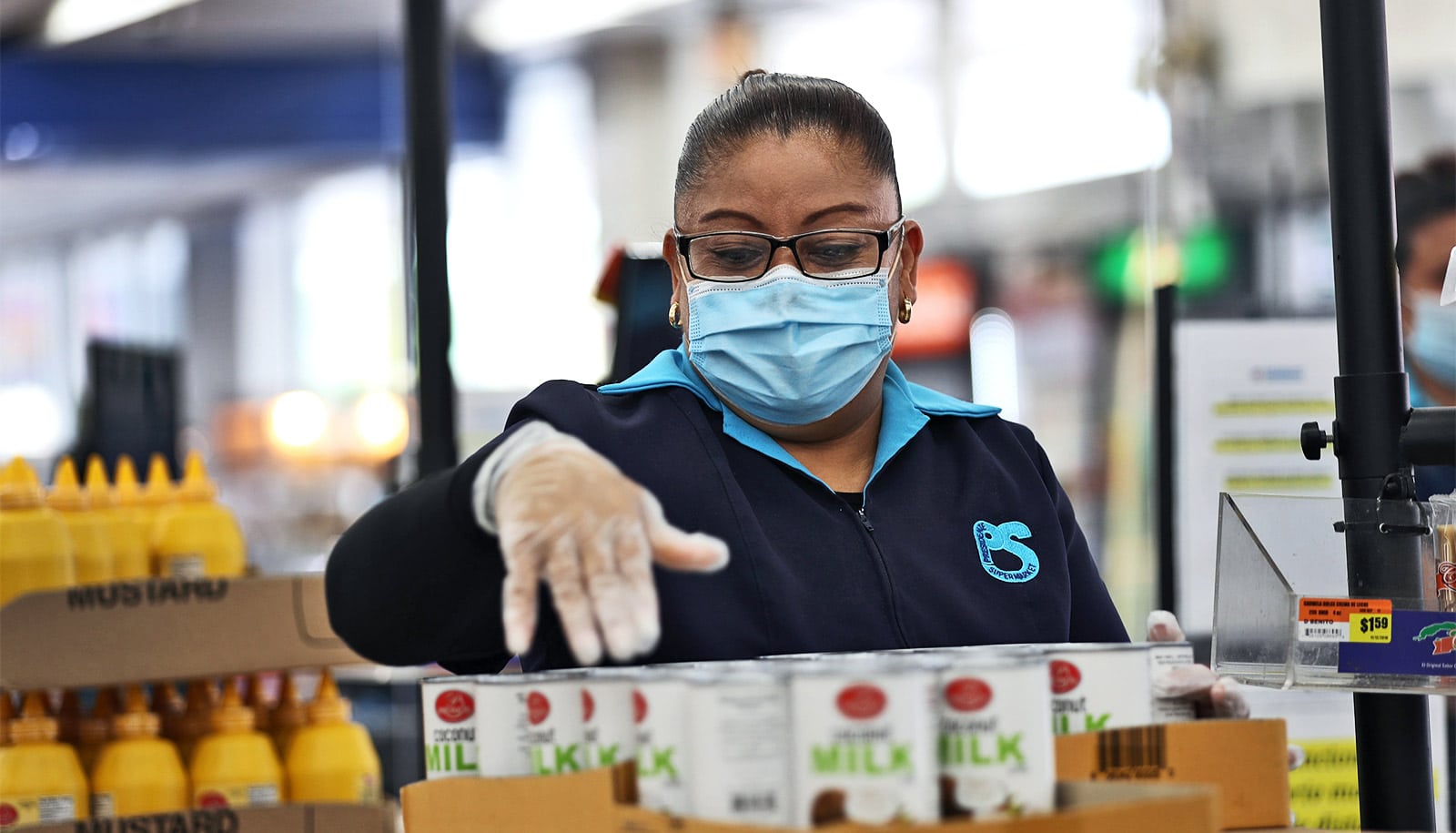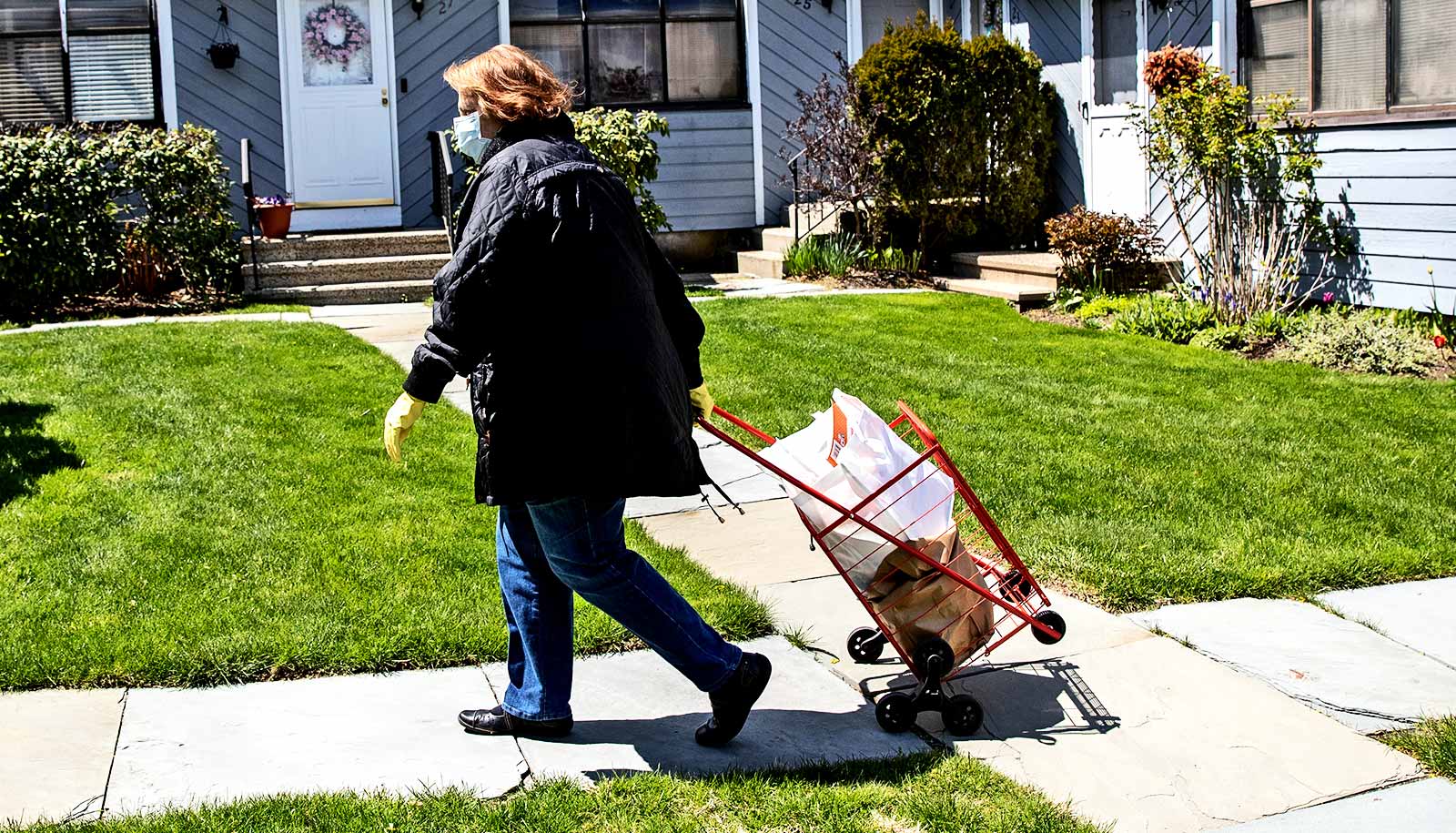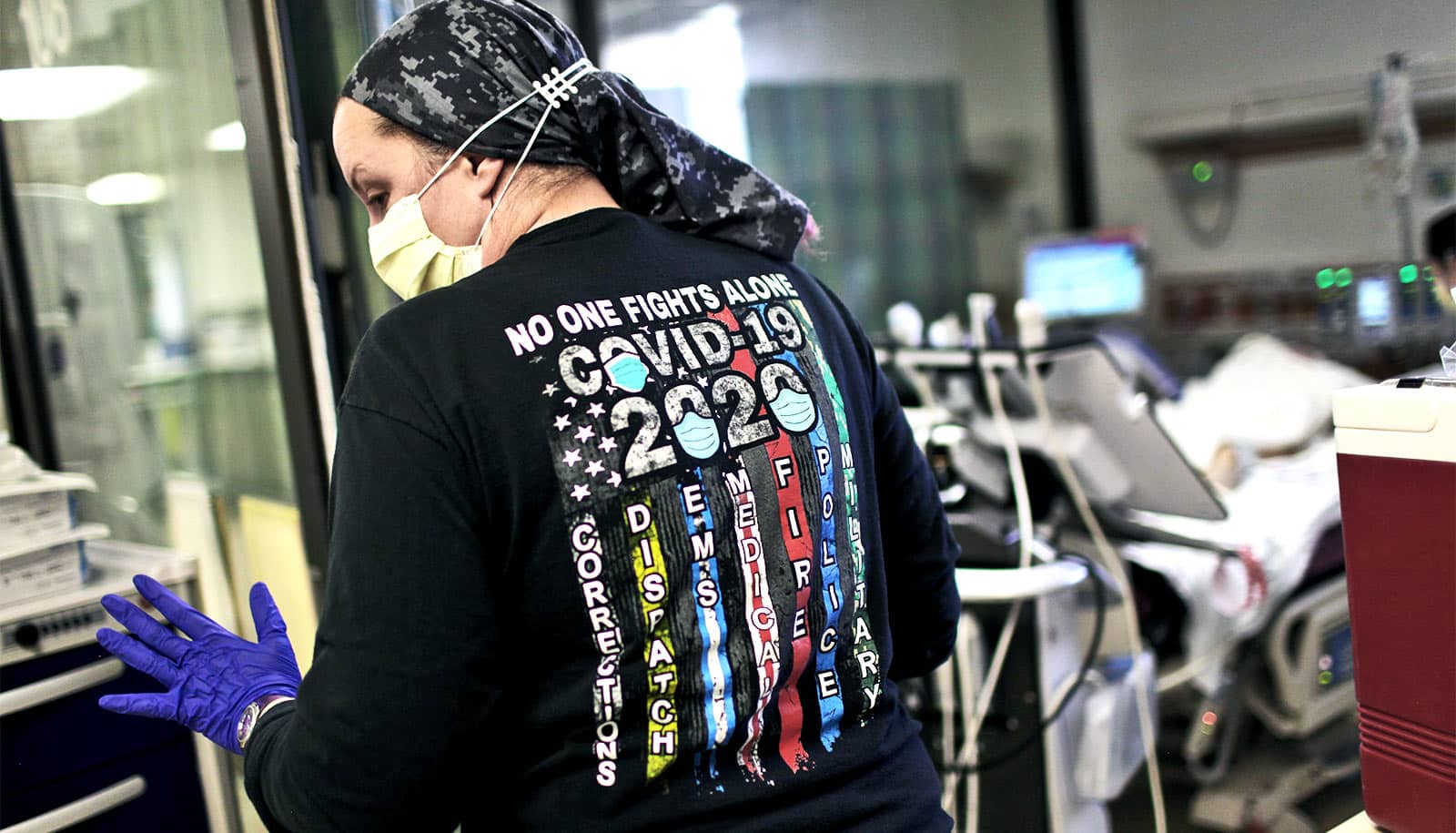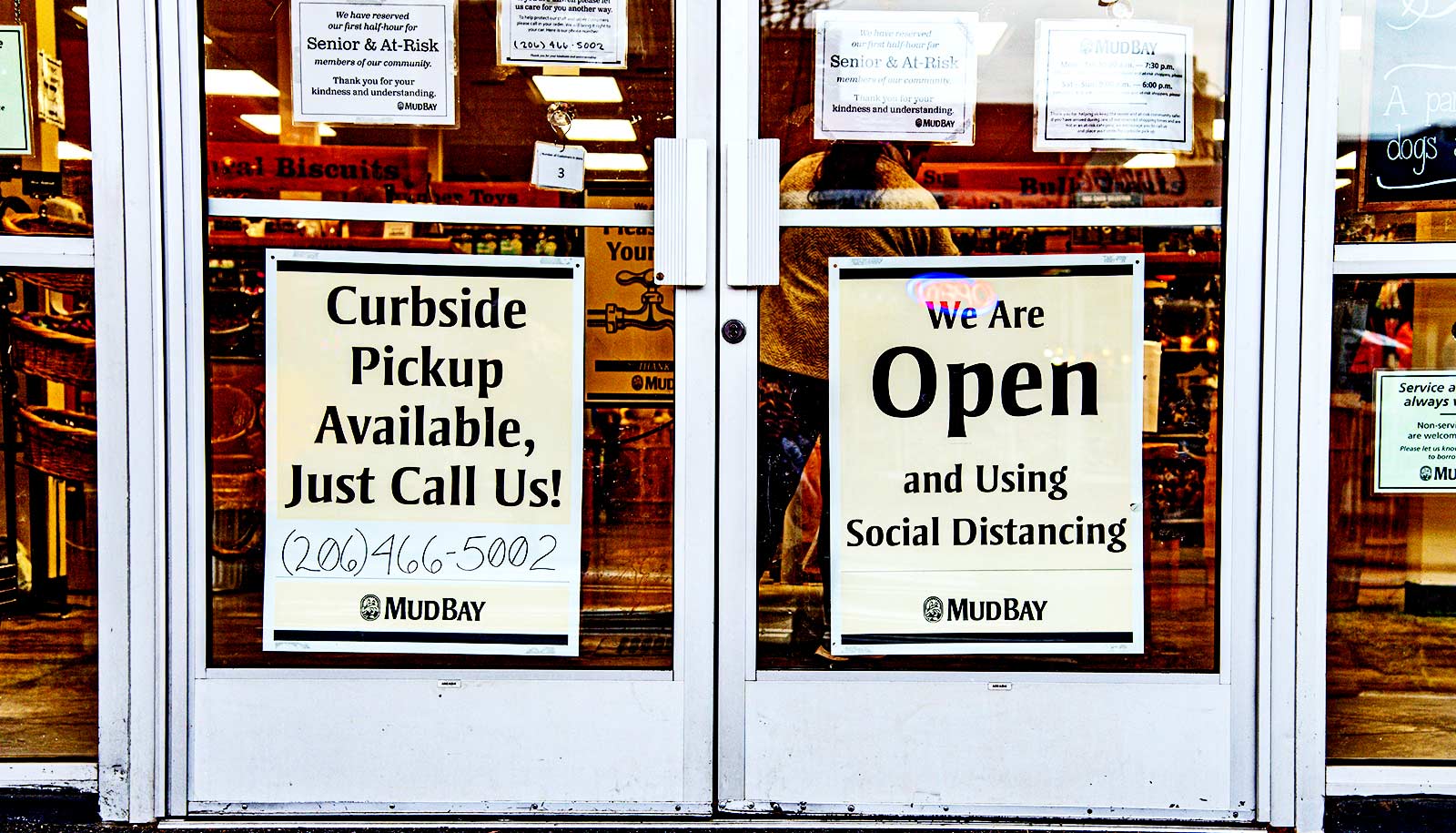A new study shows that 20% of grocery store workers in Arizona report experiencing severe levels of mental distress during the COVID-19 pandemic.
One of the main sources of stress? Customer behavior.
“The mental health of these workers was much worse than we thought,” says Brian Mayer, an associate professor in the University of Arizona School of Sociology in the College of Social and Behavioral Sciences and lead author of the report.
“The number of people reporting severe mental health distress is two, three times what other surveys are finding during the pandemic. Clearly, frontline essential workers’ mental health is being harmed by the conditions created by the COVID-19 pandemic.”
The report is based on a survey Mayer and colleagues conducted in collaboration with the United Food and Commercial Workers Union Local 99, which represents workers in nearly half of all grocery stores in Arizona.
A total of 3,996 UFCW members completed the survey over the summer, during the height of the first wave of the COVID-19 pandemic in Arizona.
While research exists on the pandemic’s impact on health care workers, Mayer says this project is one of the first to focus solely on the experiences of retail and service sector workers—an often overlooked group.
“We wanted to provide information about this group of the essential workforce, often making minimum wage or close to minimum wage, who are asked to take on this additional burden of being exposed to lots of customers on a regular basis for oftentimes no additional compensation,” Mayer says.
The findings reveal that employees are highly concerned with safety measures, particularly those related to customer behaviors. Survey participants also reported high levels of stress, anxiety, and depression.
Customers are ‘always right’
The report also highlights the financial impacts of the pandemic and the need for increased compensation for essential workers who take on additional risks for the benefit of society.
The report includes recommendations for employers, including increasing training for supervisors and employees, developing strategies to encourage customer compliance with safety policies, and connecting employees to health care and mental health resources.
“The results are a roadmap of the COVID-19 pandemic’s profound effects on our members’ experience,” says James McLaughlin, president of UFCW Local 99 and UFCW international vice president. “Critically, the study’s findings and recommendations are universally applicable to other essential frontline workers and their employers.”
Survey respondents reported experiencing elevated anxiety, depression, and stress compared to other populations during the pandemic. They also reported worse general health than the national pre-pandemic averages.
While 28% of respondents reported mild levels of mental health distress, 17% reported moderate levels, and 20% reported severe levels—an “alarming” finding, Mayer says.
Feeling safe in the workplace was the strongest predictor of mental health.
“It is apparent that there is need for not only enhanced mental health and social services but also a need for more coordinated employee safety efforts,” says coauthor Mona Arora, a research specialist in the community, environment, and policy department in the Mel and Enid Zuckerman College of Public Health.
“As we grapple with this second wave of the pandemic, we need to evaluate how current workplace policies protect employee safety and wellbeing.”
What makes grocery store workers feel safe?
Among the workers who completed the survey, 62% agreed or strongly agreed that they felt safe at work during the COVID-19 pandemic, and 54% felt that their employer was doing enough to keep them safe.
Only 18% reported being trained on the proper use of any personal protective equipment provided by their employer. Workers who reported having access to training were twice as likely than those who did not have access to training to report feeling safe at work—a finding that Mayer found surprising.
“I think what we’re seeing is workers being anxious and looking for someone to tell them that they’re going to keep them safe, and these companies—according to these data—aren’t doing that enough,” Mayer says.
Placing limitations on customer behavior was important for employees’ perceptions of safety, and workers were troubled by the lack of management intervention when customers violated store policies, such as required mask wearing and social distancing. Customer behavior was a major source of stress, with 55% of survey participants saying they expected they would be verbally threatened by an angry customer.
One survey responder wrote, in reference to mask wearing, “Customers have come right into my personal space and leaned in to tell me why they’re not going to wear one—’political, uncomfortable, too hot, can’t breathe, medical condition’—but I wear mine correctly for eight hours every day… to protect them.”
In a culture where “the customer is always right,” respondents said they receive mixed messages from management about actually enforcing policies.
“Retailers are strongly advised to provide better guidance and support for their employees who feel the mental strain of having to balance the need for their own physical safety from altercations with misbehaving customers, while being expected to best serve all their customers and keep them safe,” says coauthor Sabrina Helm, an associate professor in the Norton School of Family and Consumer Sciences in the College of Agriculture and Life Sciences.
“Mixed messages or incomplete procedures in this regard cause immense frustration, increasing negative effects on mental health of a particularly vulnerable part of our essential workforce.”
Financial worries add to stress
Even though the respondents have jobs, a third of them indicated they lacked reliable access to food, and 26% of workers caring for children have missed a housing payment due to the pandemic.
While increased pay—referred to as hero pay, appreciation pay, or hazard pay—was offered by some employers at the start of the pandemic, it ended for many employees before summer, even as the rates of infection soared.
“This mismatch between the hazard of frontline work and compensation for additional risks clearly played on the minds of many in our survey,” Mayer says.
One respondent wrote, “I don’t think we should’ve had our increased pay taken away, especially since having to work more and longer hours. Going to work every single day that the virus is ever-present puts us all at risk. There is always at least one high-risk person in each employee’s lives.… Not only does working hard and extra during this pandemic negatively affect us physically and financially, but our mental health and spiritual well-being worsens each day.”
“We are at a point where there is a need for coordinated policies and worker safety initiatives that place the safety of both the employee and community at the center,” Arora says. “Health of the grocery store worker is not just a retail or public health issue. It is a community-wide issue that requires a coordinated, collaborative approach.”
The team plans to run a second wave of the survey in January.
Source: University of Arizona



